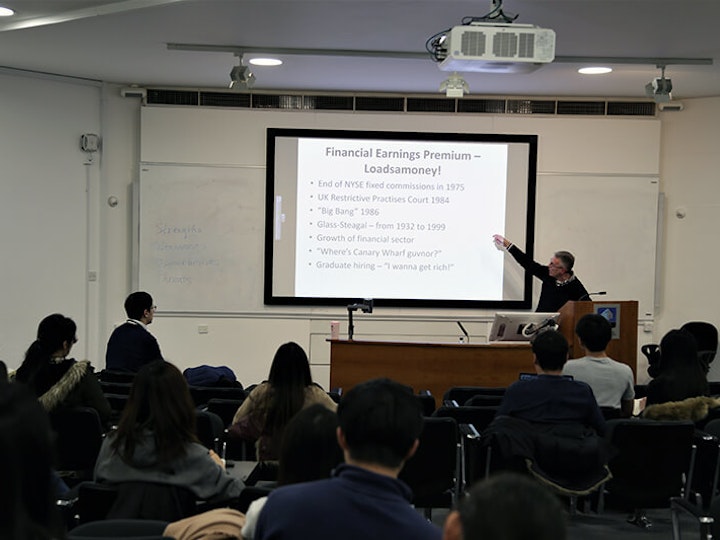Industry Insights - Andrew Bevan - Fulcrum Asset Management
On Wednesday 22 January, Andrew Bevan spoke about the differences between the buy-side and the sell-side, based on his extensive experience.

The Differences Between the Buy Side and the Sell-Side
Dr. Andrew Bevan, an ICMA Centre visiting fellow, gave us an insight on the buy-side and the sell-side on Wednesday 22 January.
Andrew is a partner at Fulcrum Asset Management since 2006 and was previously the Co-Head Global Market Strategy at Goldman Sachs until 2005. He was then a Professor at the University of Reading in 2005-2006. Dr. Bevan spent 40 years in the Finance industry, two thirds of it in the sell-side and one third in the buy-side.
During his talk, he presented the differences between the buy-side and the sell-side.
He first made an overview of the differences between the old world and new world and what has changed. He told us that before, big money was made on the sell-side, but now this has changed because of the crisis and the buy-side is gaining power. He then presented a view on volatility in the financial markets where besides the equity crash of 1987 and the financial crisis in 2008-09, the volatility is quite stable. He also told us that crises are becoming normal in the finance industry with a succession of shocks happening quite often.
Andrew first presented the sell-side, an area where he spent most of his career. The sell-side is defined by Market Making and Managing Inventory. At Goldman Sachs, this is the bank side. Commercial and Investment Banks are selling bank products to it's customers. In the sell-side, Andrew was doing all the research to make the project successful. The big constraint of the sell-side is that if you take on too much risk or do not explain clearly what you are doing, investors won’t invest with you.
The buy-side, for example Goldman Sachs Asset Management, is the part where finance professionals invest their clients’ money in bond and equity markets for instance. The role in the buy-side is to manage the assets yourself, manage equity portfolios and design portfolios that investors would want to buy from you. For Andrew, the buy-side is more intellectual than the sell-side. To succeed in the job, he told us that you need to know how to win, but more importantly to know how to lose.
To finish, Andrew gave some tips for graduate careers, explained the differences between doing a Masters or a CFA and told us not to inevitably precipitate ourselves to big institutions as a first job.
The ICMA Centre and the UoR Finance Society would like to thank Dr. Andrew Bevan for this insightful talk!
Etienne Maigrot, Vice President, Finance Society